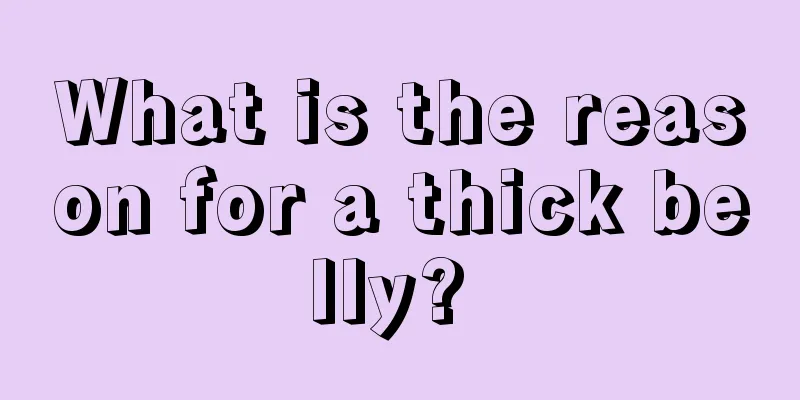Acupuncture treatment for stubborn hiccups

|
Hiccups, also known as burping, are a relatively common phenomenon. Persistent hiccups are a type of hiccups and are also a disease that needs to be treated and relieved through certain methods. For stubborn hiccups, there are many ways to treat them, acupuncture is one of them. In addition, ear acupuncture, electroacupuncture and other methods also have therapeutic effects. Below, we will introduce these three treatment methods in detail! 1. Acupuncture The main acupoint can be selected as Zhongkui. Acupuncture methods include acupuncture and moxibustion. When using the acupuncture method: the patient should remain lying flat, expose the Zhongkui point and loosen the clothes. After routine local disinfection, use 28-gauge 0.5-1 inch filiform needles to vertically insert the needles into the Zhongkui points on both sides of the body at the same time. The insertion depth is about 0.2 mm, and then the twisting technique is used to strongly stimulate the acupoint. When inserting the needle, the doctor should also instruct the patient to take a deep breath through the nose and then hold the breath as long as possible. Generally, the patient can stop needle movement after holding his breath for 3 to 5 times continuously. Once the patient's hiccup symptoms stop, perform deep abdominal breathing and leave the needle on the acupoint for 30 minutes. Then, move the needle once every 5 minutes. 2. Ear Acupuncture The main acupoints to be selected are the middle of the ear and the stomach. The acupoints that can be selected mainly include spleen, liver, subcortical, sympathetic, Shenmen, and adrenal gland. During treatment, the main acupoints must be selected, and 2-3 auxiliary acupoints should be added according to the symptoms. For the Ear Zhong acupoint, use a 0.5-inch filiform needle with the shallow puncture drainage method, and continue to twist or hold the needle handle for half a minute after the needle is inserted. Next, pierce through the stomach acupoint. When the patient has obtained qi through lifting and inserting the needle, use adhesive tape to fix the needle. At the same time, needles are implanted on the acupuncture points for 1-2 days depending on the symptoms. When using acupuncture for treatment, the needles can be left in for 30 minutes after the patient has gained qi through acupuncture. 3. Electroacupuncture You can select 1 main acupoint each time, and 1 to 2 auxiliary acupoints can be selected and used in combination. For the Jiuwei point, use a 5-6 inch long filiform needle to quickly insert the needle into the subcutaneous tissue at a 25-degree angle. Then, lay the needle horizontally and penetrate it to the Jianli or Xiawan point. Leave the needle in place for half an hour. If ineffective, add Tiantu acupoint; insert a 2-inch filiform needle straight into the acupoint to a depth of about 0.2 to 0.3 inches, then turn the needle downward and pierce along the posterior chest wall to a depth of 1 to 15 inches (pay special attention to safety when puncturing the Tiantu acupoint, and the needle tip should not be tilted to the left or right), without twisting or lifting. Afterwards, turn on the electroacupuncture device, with the negative pole connected to the xiphoid process and the positive pole connected to the tiantu point, and use continuous wave, first giving high frequency (3000-5000 times/minute) and strong current (the intensity should be tolerable to the patient), and turn on the power for 1 minute. Then adjust the current intensity and frequency to a level that the patient feels comfortable with, and continue to power on for half an hour. For Tianding acupoint, the patient can lie on his back and take a No. 28 2-inch needle. First, insert it straight into the acupoint about 0.2 inches, and then penetrate it in the direction of Tiantu. When the needle is inserted to a certain depth and touches the phrenic nerve (the patient may experience reflex diaphragm contraction at this time), the electroacupuncture device (bilateral Tianding) is turned on. First stimulate with continuous wave, high frequency and stronger current (tolerable to the patient) for 1 minute, then adjust to a low frequency and weaker current that the patient feels comfortable with. For the Tanzhong point, ask the patient to open his mouth and take a deep breath, and then insert the needle tip upward along the skin into the point 0.3 to 2 inches. Insert the bilateral Lieque points obliquely toward the elbow at a depth of 0.2 to 0.5 inches, first perform strong stimulation, and then apply electric acupuncture as above. Neiguan and Zusanli are acupunctured after the hiccups stop. After the qi is obtained, the needles are retained for 15 minutes using the above methods, once a day, 3 to 5 times as a course of treatment. |
<<: What's wrong with the brown tongue coating
>>: The difference between maltose and syrup
Recommend
What's the matter with the small bumps on the fingers
In life, many people report that they have small ...
Can liver cancer be cured if it has metastasized?
Can liver cancer be cured if it has metastasized?...
What to do if elbow ligament is strained, how to deal with it
When exercising or doing some external force exer...
Early symptoms of gastric cancer are conducive to the treatment of the disease
Gastric cancer is a very common cancer of the dig...
How to use grapefruit cleansing gel
Grapefruit makeup remover gel is a popular makeup...
What are the manifestations of bladder cancer ultrasound examination
Urinary tract tumors often cause painless hematur...
Are there still parasites in cooked crayfish?
Crayfish is a delicacy that people often eat in s...
Red blood streak removal meeting
Red blood streaks are a very special condition on...
What happens if you eat pork with parasites
Are the consequences of eating pork with parasite...
Can I lose weight by starving myself
People who want to lose weight want to have a per...
What should I do if my anus hurts when I defecate
When anal pain occurs during bowel movements, pat...
A good tea recipe for nasopharyngeal carcinoma patients during radiotherapy
Radiotherapy is one of the main means of treating...
What does pharyngitis feel like
Throat diseases are very common in our lives, and...
Why does the skin have purple spots
The skin can be regarded as the largest organ in ...
Congenital heart disease open-chest surgery
Heart disease is a relatively common disease. Lat...









